One of the biggest changes I made after learning about the Science of Reading and my LETRS training was putting up a sound wall. It was monumental and I’d never go back! I’m going to share with you just exactly what a sound wall is and why you NEED one in your classroom. Adding a sound wall in the classroom can be the BEST thing you do for your students.
What is a Sound Wall?
Sound Walls are interactive reading and writing tools for students. A complete sound wall has all 44 phonemes or sounds in English and the ways they can be spelled which varies depending on what grade you teach. This helps students to connect the graphemes (written representation) to the phonemes (sounds). It supports students in their development of phonics skills as well as irregular words often referred to as sight words or high-frequency words.
Sound walls go from speech to print instead of print to speech which is how the brain is wired. Speech is natural while print requires explicit instruction to learn.
Sound Wall VS Word Wall
You may be asking why to switch to a sound wall from the traditional word wall. If you have been around education for very long you are probably familiar with word walls. Many schools even require teachers to have a word wall. A giant section of your classroom with every letter in alphabetic order with words added to it each week based on their first letter.
I have had several over the years my favorite being a magnetic one when I taught first grade that the kids could easily remove words to take to their writing spot and copy down the word. But the fact that they had to take it to their spot and copy it is proof that it didn’t work. Now don’t get me wrong we USED ours! We practiced our words it wasn’t just another bulletin board or a decoration. However, many kids still were unable to spell or in some cases even locate the words. This is because it was based on the first letter of the word and not sounds.
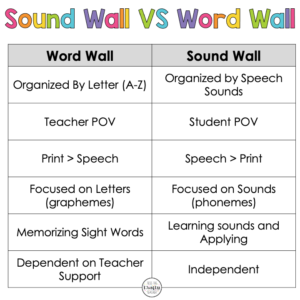
Sound walls focus on just as the name implies the sound rather than the letter. They allow for the application of phonics rules and spelling generalizations. Words are grouped by initial sound for consonants and vowel sound under the vowels on a sound wall.
Teaching Consonants and Vowels with a Sound Wall
There are usually two parts of a sound wall; a consonant articulation wall and a vowel wall. The consonants will focus on the mouth placement and articulation of the consonant sound. The letters are grouped by how they are made. My sound walls include directions on how to arrange your consonants and vowels.
The second part often called a vowel valley is organized by how far your mouth opens when you say the vowel. Consonant sounds are made with our articulators or mouthparts; teeth, lips, tongue, etc. When you say a vowel, the airflow is not restricted by any of these articulators.
In my opinion, you don’t need to label your sound wall with speech labels such as glides, stops, affricates and so on but knowing them might help you when instructing students on how to make the sounds especially if you teach kindergarten.
Where to Find a Sound Wall
While you can certainly create your own sound wall or use materials from your current curriculum. I know programs like Pathways to Reading and Wonders include phoneme cards and or mouth pictures. I have created a Sound Wall resource called Unlock the Sound. It includes sound walls for Kindergarten, First, and Second Grade or you can purchase the Bundle which includes all of the resources and bonus phoneme labels.
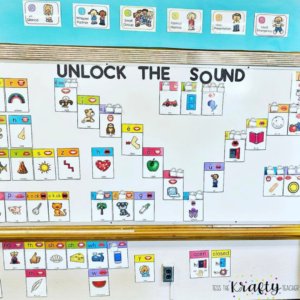
When you go to the resource bundle on TPT you will see that I have individual sound walls for K,1, and 2 but you can only get the phoneme labels in the bundle. The reason I have different versions is I believe Kindergarteners do not need a full sound wall. In fact, in my experience, it can be overwhelming to young students to have an entire sound wall. “Unlocking” sounds by using this resource or adding sounds to the wall as they are introduced in kindergarten as they learn them is a good way to help avoid confusion. The picture above shows a first-grade sound wall after reviewing consonant sounds, digraphs, and short vowels.
All of the sound walls I created include phoneme cards with spelling, picture and key word. There are both mouth and no mouth options to fit teachers needs.
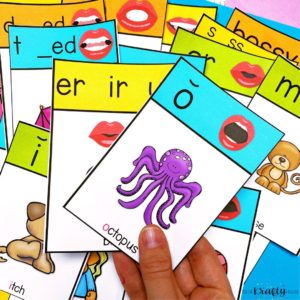
Implementing a Sound Wall is easy and the right choice to help your students become skilled readers and writers! To see how I improved my reading buddies (you know Skippy Frog and Tryin Lion) to make them more Science of Reading Friendly click HERE.
More Ways to Use your Sound Wall Cards
1. Create a mobile sound wall. While my sets all include mini sound walls you can print for small groups or give to students individually you can print at half size and use a trifold board to have one at your small group table for instruction as well.
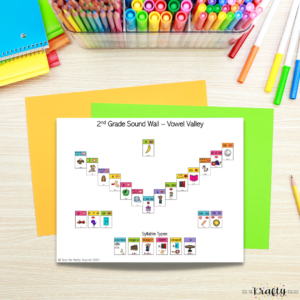
2. Print a set to use when you introduce new sounds during your direct, explicit instruction.
3. Print a set and put them on a ring for students to use in centers.
4. Print sets and create games like concentration or tic tac toe for students to play.
Sound Wall FAQ
Q: Should I put sight words on my sound wall?
A: Sound Walls are to be referenced not really added to. There are the keywords for each sound but with sight words which sound would, you put it under? The first sound? The Vowel Sound? So otherwise no. I also suggest trying to teach Sight Words using the Heart Word Method.
Q: Should I get rid of my alphabet line?
A: No this still provides assistance with letter formation and alphabetical order. You do want to make sure that you select an Alphabet line where all of the picture key words are a good representation of the letter sound, especially in Kindergarten.
PIN FOR LATER
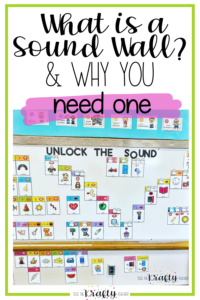


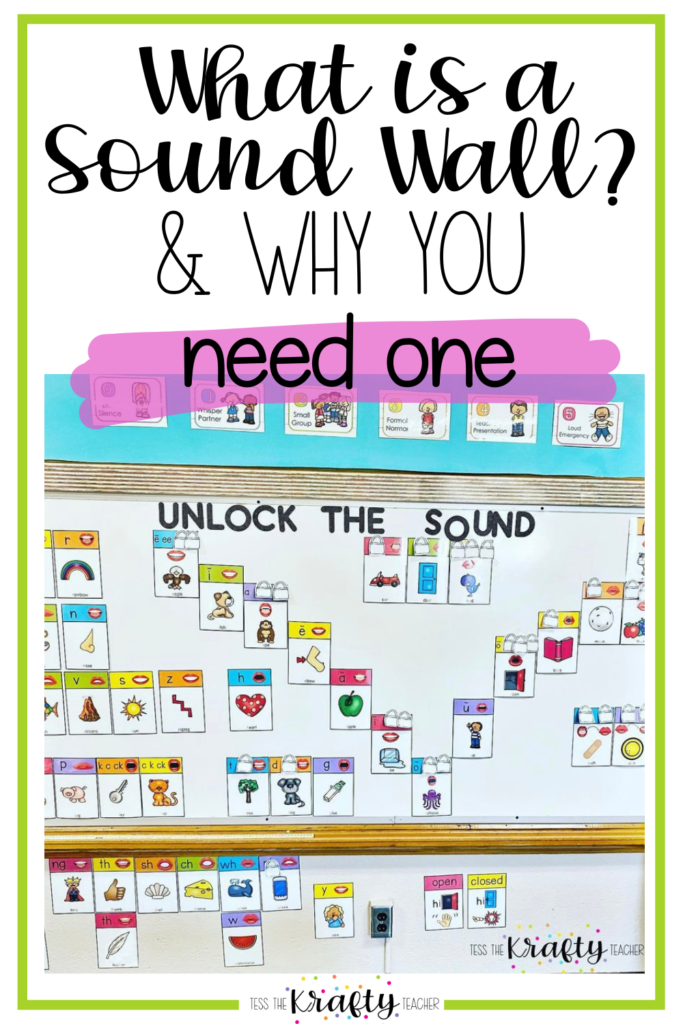
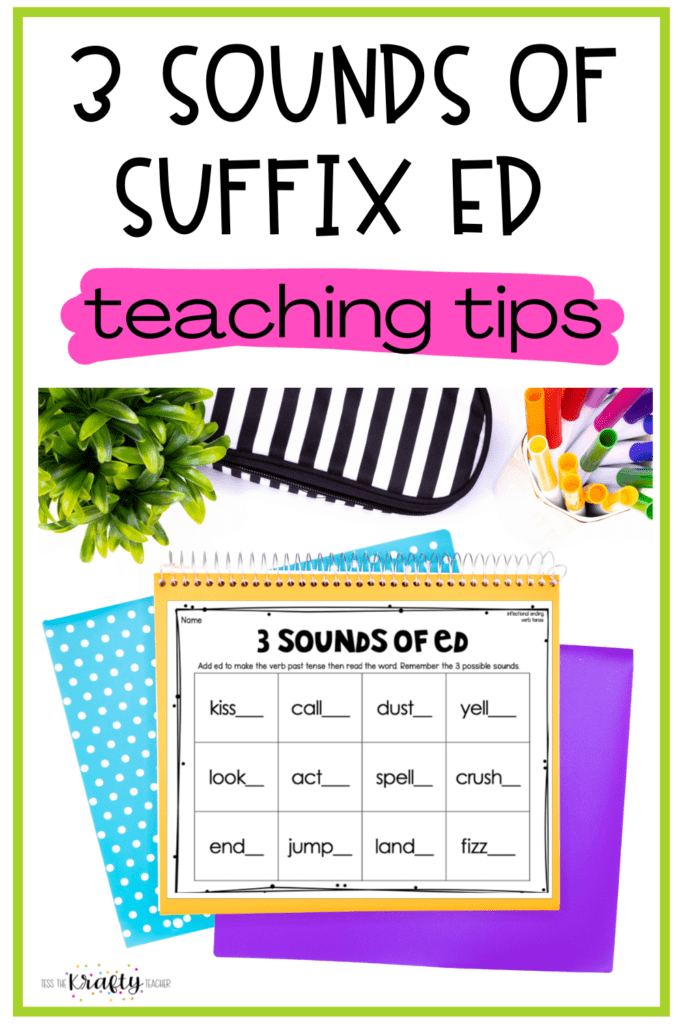
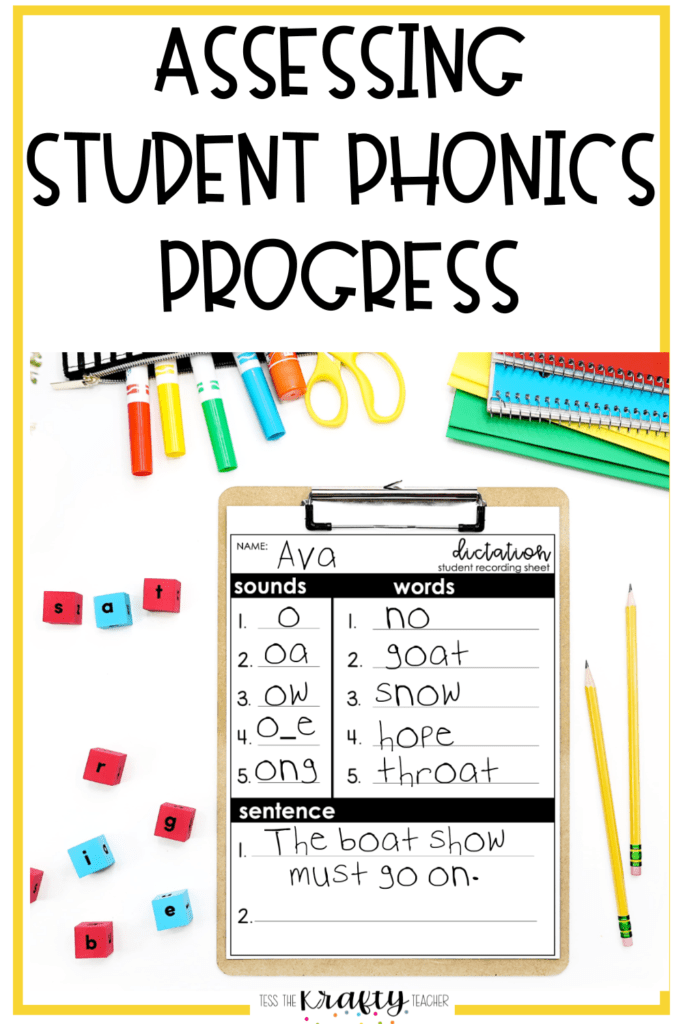
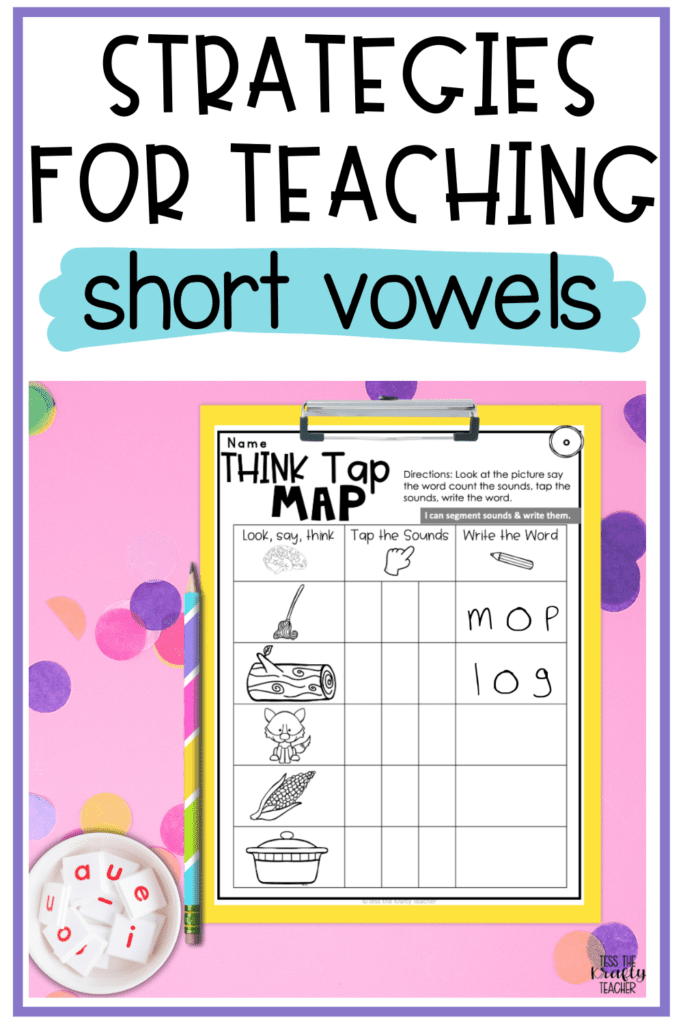
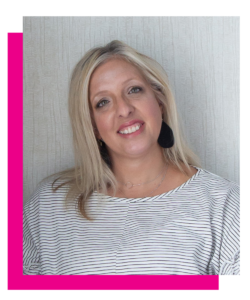
2 Responses